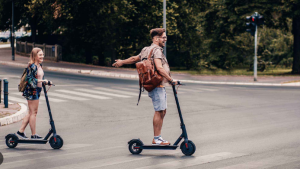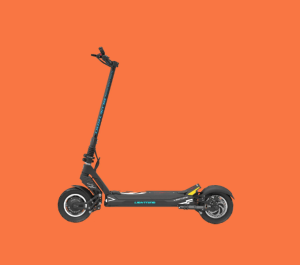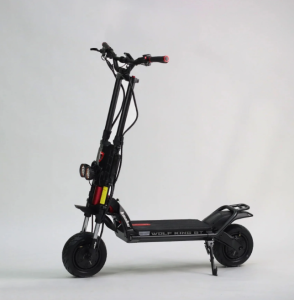Electric scooters are not hard on electricity; they are energy-efficient, consuming minimal electricity compared to cars.
Introduction to Electric Scooters
Overview of Electric Scooter Technology
Electric scooters, a form of micro-mobility, have gained popularity due to their efficiency and ease of use. Typically powered by rechargeable lithium-ion batteries, these scooters boast an average range of 20 to 40 kilometers per charge. Key features include lightweight frames, electric motors, and regenerative braking systems which contribute to their energy efficiency. The motor power of these scooters generally ranges from 250 to 500 watts, offering speeds up to 25 kilometers per hour, aligning with urban speed limits.
The Rise of Electric Scooters in Urban Mobility
Electric scooters have significantly altered urban transportation. Their popularity can be attributed to their affordability and convenience, particularly for short-distance travel. In cities, where traffic congestion is a major issue, electric scooters offer a time-efficient alternative. A study revealed that in urban areas, electric scooters can reduce travel time by up to 20% compared to cars. The compact size and ease of parking further enhance their attractiveness in crowded cityscapes. Their low operating costs—averaging a few cents per kilometer—make them a budget-friendly option for daily commuters.
Electric scooters also contribute to a greener urban environment. Unlike traditional gasoline-powered scooters, they emit no direct greenhouse gases during operation, which is crucial in combating urban air pollution. As cities increasingly focus on sustainable transportation, electric scooters are becoming an integral part of urban mobility strategies.
Electricity Consumption of Electric Scooters
Comparing Electricity Usage with Other Modes of Transport
Electric scooters are renowned for their high energy efficiency when compared to other modes of transport. On average, an electric scooter consumes about 7-10 watt-hours per kilometer. This is significantly lower than automobiles, which average about 550 watt-hours per kilometer for gasoline-powered cars and around 200 watt-hours per kilometer for electric cars. Public transportation like buses, although efficient in mass transit, consumes about 30-40 watt-hours per passenger-kilometer, which still places electric scooters ahead in terms of individual energy efficiency.
| Mode of Transport | Energy Consumption (Wh/km) |
|---|---|
| Electric Scooter | 7-10 |
| Gasoline Car | 550 |
| Electric Car | 200 |
| Bus (per passenger) | 30-40 |
Electric scooters not only reduce energy consumption but also lower the carbon footprint. This efficiency is a major factor in urban areas where reducing emissions is critical.
Factors Influencing Electricity Consumption in Scooters
Several factors influence the electricity consumption of electric scooters. The weight of the rider and cargo can significantly affect energy use. Heavier loads require more energy to move, thus increasing consumption. The terrain plays a crucial role too; scooters consume more power on uphill routes compared to flat or downhill roads.
Scooter specifications like motor power and battery capacity also determine consumption. Higher-powered motors (above 500 watts) and larger batteries increase the range but also lead to higher energy use per kilometer. Riding habits such as frequent starts and stops, and maintaining high speeds, can increase energy consumption.
Weather conditions also impact electricity use. Colder temperatures can reduce battery efficiency, leading to higher consumption rates. Conversely, ideal conditions (mild temperatures, flat terrain, and light loads) optimize energy use, making electric scooters an extremely efficient mode of urban transport.
Battery Technology in Electric Scooters
Types of Batteries Used in Electric Scooters
Electric scooters predominantly use lithium-ion batteries, known for their high energy density and lightweight properties. These batteries typically offer a life span of 500-1000 charge cycles before their capacity significantly diminishes. Lithium-ion batteries are preferable due to their efficiency in power delivery, longer life spans, and faster charging times compared to older battery types like lead-acid or nickel-metal hydride.
Lead-acid batteries, while more affordable and robust, are heavier and have a lower energy density. They are found in budget or older scooter models and offer roughly 200-300 charge cycles. The weight of lead-acid batteries makes them less ideal for portable scooters, as it impacts the overall speed and range of the scooter.
The capacity of a scooter’s battery is a crucial aspect. It directly influences the range and performance of the scooter. A higher capacity (measured in watt-hours, Wh) allows for longer distances per charge. A scooter with a 250Wh battery may cover around 15-20 kilometers, while one with a 500Wh battery could potentially cover up to 40 kilometers, depending on factors like rider weight and terrain.
Battery Capacity and Its Impact on Electricity Usage
The battery’s capacity significantly affects the scooter’s electricity consumption. A larger battery doesn’t necessarily mean higher energy consumption per kilometer but provides a greater range. It’s the energy efficiency, measured in watt-hours per kilometer (Wh/km), that determines how much electricity a scooter uses.
A scooter with a high-capacity battery may consume more electricity in a single charge but can cover a greater distance, making it more efficient over longer trips. A scooter with a small capacity battery consumes less electricity per charge but needs to be recharged more frequently, especially if used for long distances regularly.
Charging Infrastructure for Electric Scooters
Home Charging vs Public Charging Stations
Home charging is the most convenient and commonly used method for electric scooter users. It involves using a standard electrical outlet and the scooter’s charger, typically taking about 4 to 8 hours to fully charge a scooter, depending on the battery size. The cost-effectiveness of home charging is significant, with the average cost per charge being less than a dollar, making it an affordable option for daily use.
Public charging stations, on the other hand, offer a faster charging solution. These stations can charge a scooter to 80% capacity in about an hour. They are less common and can have varying costs, usually more expensive than home charging. The development of public charging infrastructure is crucial in urban areas to support the growing use of electric scooters, especially for those who may not have access to home charging facilities.
The choice between home and public charging often depends on the user’s lifestyle and scooter usage patterns. For regular commuters, home charging overnight is sufficient, while public charging stations are more suited for long-distance travel or emergency top-ups.
The Efficiency of Scooter Charging Systems
The efficiency of electric scooter charging systems is a vital aspect, affecting both the operational costs and environmental impact. Modern electric scooters have an average charging efficiency of about 85-90%. This means that most of the electricity used is effectively converted into stored energy in the battery, with minimal loss.
Charging efficiency can be influenced by factors like the quality of the charger, battery condition, and ambient temperature. High-quality chargers and well-maintained batteries ensure optimal charging, while extreme temperatures can reduce efficiency.
Advancements in charging technology aim to increase efficiency and reduce charging times. Innovations such as smart charging systems and high-capacity chargers are being developed. These systems not only charge faster but also manage the charging process to extend the lifespan of the battery and reduce energy loss.
Environmental Impact
Electric Scooters and Their Carbon Footprint
Electric scooters significantly reduce the carbon footprint compared to traditional motorized vehicles. The key factor in their environmental impact is the source of electricity used for charging. If the electricity comes from renewable sources like solar or wind power, the carbon emissions are drastically lower. On average, an electric scooter emits about 100-200 grams of CO2 per kilometer when charged with electricity from conventional sources. This number can be near zero if the electricity is sourced from renewables.
Another environmental benefit of electric scooters is the reduction of noise pollution. Their electric motors operate quietly, making them a more pleasant and eco-friendly option in urban settings. However, it’s important to note that the environmental impact of manufacturing and disposing of scooters, particularly their batteries, needs careful management to ensure a truly sustainable lifecycle.
Comparison with Gasoline-Powered Scooters
When compared to gasoline-powered scooters, electric scooters are far more energy-efficient and environmentally friendly. A typical gasoline-powered scooter emits about 2,000 grams of CO2 per kilometer, significantly higher than the electric alternative. Gasoline scooters also contribute to urban air pollution with emissions of nitrogen oxides and particulate matter.
Fuel efficiency is another point of comparison. While electric scooters consume less energy per kilometer, gasoline scooters have a higher energy consumption due to the inefficiencies in burning fuel. This not only leads to higher operational costs but also a greater environmental burden.
In terms of maintenance, electric scooters have fewer moving parts and do not require oil changes, reducing the potential for environmental contamination. The overall lifecycle emissions of electric scooters, including production, operation, and disposal, are significantly lower than those of gasoline scooters.



